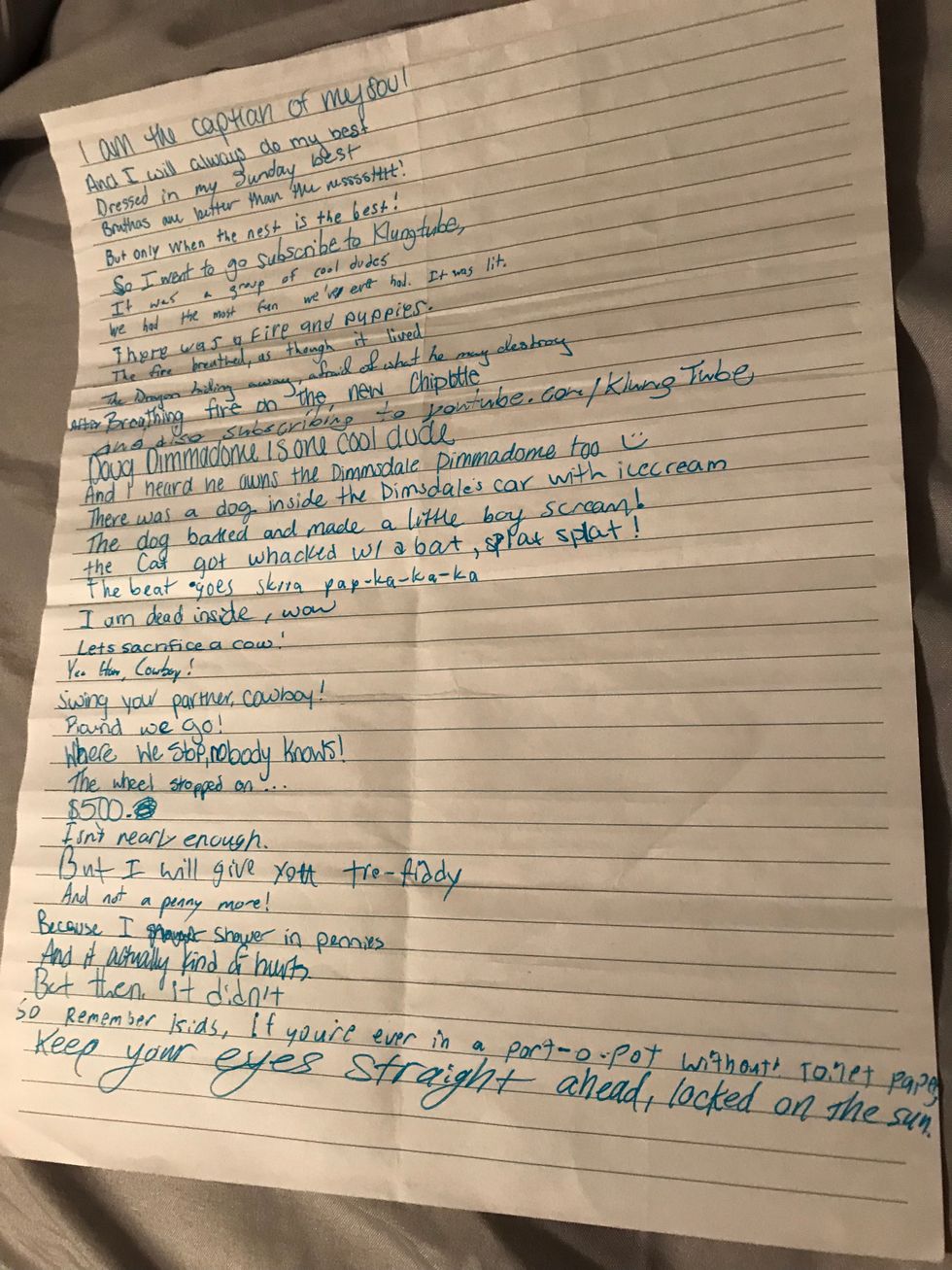The idea of writing a poem can be daunting, and writing a good poem? Impossible. Lucky for you I am here to help with some ideas to get yourself going with your writing!
The stereotypes you need to let go of before writing poetry are as follows. Not everything you write has to be perfect. Poems don’t have to rhyme. Not all poetry is sad or about love.
You don’t have to read poetry to write it, but it does help. Your poems don’t have to make sense to anyone, but you. Poetry is personal and yours. The most important thing is to express yourself and create something that is unapologetically you.
1. Observation poetry
Throughout the day we see and hear many different things. Some of these things happen through eavesdropping in the line at Dunkin Doughnuts or having a great people watching day on campus. Write down four things that you notice during your normal day. Two things you overhear people say, the context doesn’t matter, and two things that you see. You could hear someone say “I keep forgetting to call my mom” and see someone with a neon green knit hat as the pull up their scarf against the BG wind. With these two observations, you can write something that will draw attention to what others may have never seen. It can be a short and simple or as convoluted and long as you would like! Feel free to add more and more observations to your list and to your poems as you become more confident with this technique.
Example:
The wind whips my scarf and pulls up my hat to free my curls.
I need a haircut, Mom would have reminded me a week ago.
I should call her,
I just want something good to tell her.
2. Imitation Poetry
If you have a poem that you like, a song, or even a paragraph from your favorite book that really speaks to you, you have something to work with. You can take the theme of whatever you’re working with and keep it going with your own writing. Change words throughout the piece and give it your own spin, your own story. The examples I have come from the poem “What Do Women Want?” by Kim Addonizio, The Front Bottoms song “More Than It Hurts You”, and the short story “How to Become a Writer” by Lorrie Moore.
Example, “More Than It Hurts You”:
And I have been thinking about leaving,
I have been thinking about stars,
I have been thinking “what would I do without you?”
But I don't think I have the bone structure or mentality to support
this relationship any longer.
And I will tattoo my poems all over my body.
They will remind me who I am inside.
And I will cut off my hair,
when I am free
in Pennsylvania.
The other two examples can be found on my blog (https://courtneysuepollockwriting.blogspot.com/ ) and are titled “I’ll be the Little Princess “How to Become a Slut”.
3. Black Out Poetry
This has been a very popular technique in the poetry community as of late. It consists of taking the page of a book, or a poem that you printed out and bringing attention to certain words. These words will be circled or boxed off and left white, while the rest of the page is colored or drawn on to cover up the remaining words. It’s something that you could also do with your own works. It’s an interesting technique that can be difficult, but it can leave you with simplistic and moving shorter pieces.
Example:
BLACKOUT POETRY BY TRISTA MATEER
4. Poetry Outline
This technique/activity I learned in class and fell in love with. My roommates and I, along with any friends who were over, would write poems for hours and ended up having tons of them all over our fridge. It left us laughing and joking, while writing poetry that was funny and meaningful to us. There are 11 simple steps. You write a response for each one and at the end have a poem!
Steps:
- Write a noun.
- Write a sentence describing that noun.
- Write a paragraph as someone experiencing/seeing/hearing your noun for the first time.
- Write down a made up word.
- Define that word.
- Write a fact.
- Write an opinion.
- Write a contradicting opinion (if you have a group pass it to someone next to you so they may answer this).
- Write a sentence that is absolutely insane and makes no sense.
- Write about a color.
- Write a sentence about the noun you started with.
5. Cut and Paste Poetry or Collage Poetry
This technique is not only used by poets but by songwriters. David Bowie and Kurt Cobain used this to help them write songs. With this, you just need single lines from songs, poems by others, magazines, or even lines that you like from your one poems! Write all the single lines you like on pieces of paper and lay them out in front of you. Pick lines that sound well together and make you think. Tape or glue the lines in your desired order on to a paper or magazine page. Make it as colorful and unique as you can! Or keep it a simple and plain as you would like. You can do anything you want.
Example:
6. One-liner poems
This activity is for a group of people. You write a line on the top of a sheet of paper. Then pass it around the room so that everyone gets a chance to write a line. As the paper goes around the room the paper will be folded so that only the most recent line will be visible to the next writer. At the end of the paper being passed, you will have a great piece written by everyone. It’s a great way to bring a group together, have some laughs, and enjoy writing with others.
Example:
Always look at the library for different techniques and ideas to get you writing. Books of poetry people have written or book people have written about poetry. Pinterest is also an amazing resource when it comes to examples of blackout poetry, cut and paste or collage poetry, as well as more activities to try! Never limit yourself only trying some techniques and not others because you have a certain aesthetic, don’t think you’re good enough, or think the activity is too childish. Everything is worth a try. At the end of the day, no first draft is perfect and that’s okay. As long as you’re writing and trying, you’re doing great.















